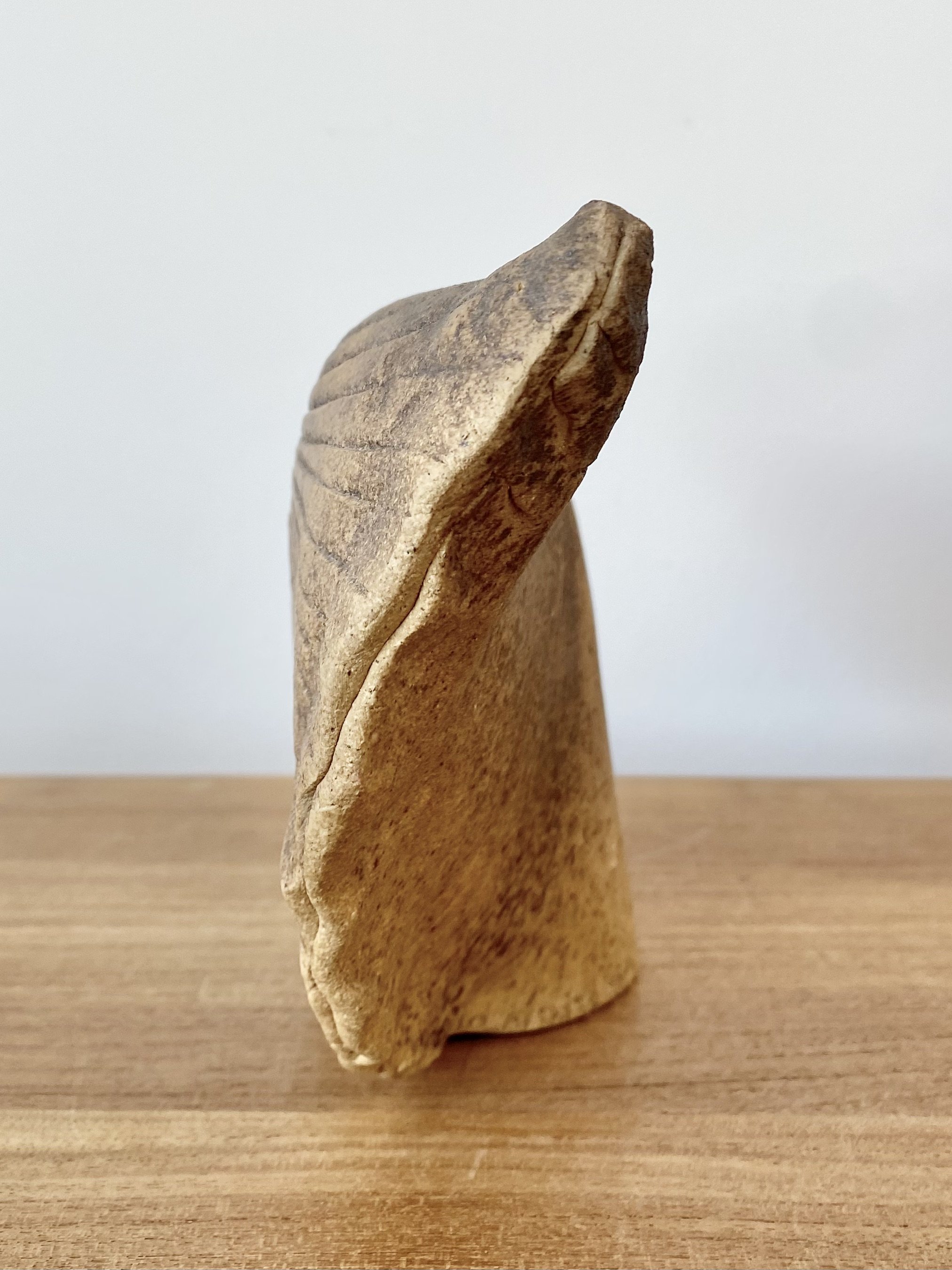 Image 1 of 6
Image 1 of 6

 Image 2 of 6
Image 2 of 6

 Image 3 of 6
Image 3 of 6

 Image 4 of 6
Image 4 of 6

 Image 5 of 6
Image 5 of 6

 Image 6 of 6
Image 6 of 6







Spirifer Sculpture
Here is an unusual, hand-built stoneware sculpture that we discovered in the Catskill mountains of Upstate New York. The maker is unknown. While obviously an abstraction, it closely resembles ancient brachiopod fossils found in the area. Specifically, a brachiopod of the Order Spiriferida, some of which have a similar, wing-like structure.
The brachiopods are a phylum of vertebrates with hinged shells, like the bivalve mollusks (no relation). They were hugely successful during the Paleozoic period, but they took a hit during the Permian - Triassic extinction ("the "Great Dying"). After that, the mollusks pretty much moved in and took over their ecological niches. They still survive though, mostly in the deep ocean, a shadow of their former selves.
Here is an unusual, hand-built stoneware sculpture that we discovered in the Catskill mountains of Upstate New York. The maker is unknown. While obviously an abstraction, it closely resembles ancient brachiopod fossils found in the area. Specifically, a brachiopod of the Order Spiriferida, some of which have a similar, wing-like structure.
The brachiopods are a phylum of vertebrates with hinged shells, like the bivalve mollusks (no relation). They were hugely successful during the Paleozoic period, but they took a hit during the Permian - Triassic extinction ("the "Great Dying"). After that, the mollusks pretty much moved in and took over their ecological niches. They still survive though, mostly in the deep ocean, a shadow of their former selves.
Here is an unusual, hand-built stoneware sculpture that we discovered in the Catskill mountains of Upstate New York. The maker is unknown. While obviously an abstraction, it closely resembles ancient brachiopod fossils found in the area. Specifically, a brachiopod of the Order Spiriferida, some of which have a similar, wing-like structure.
The brachiopods are a phylum of vertebrates with hinged shells, like the bivalve mollusks (no relation). They were hugely successful during the Paleozoic period, but they took a hit during the Permian - Triassic extinction ("the "Great Dying"). After that, the mollusks pretty much moved in and took over their ecological niches. They still survive though, mostly in the deep ocean, a shadow of their former selves.